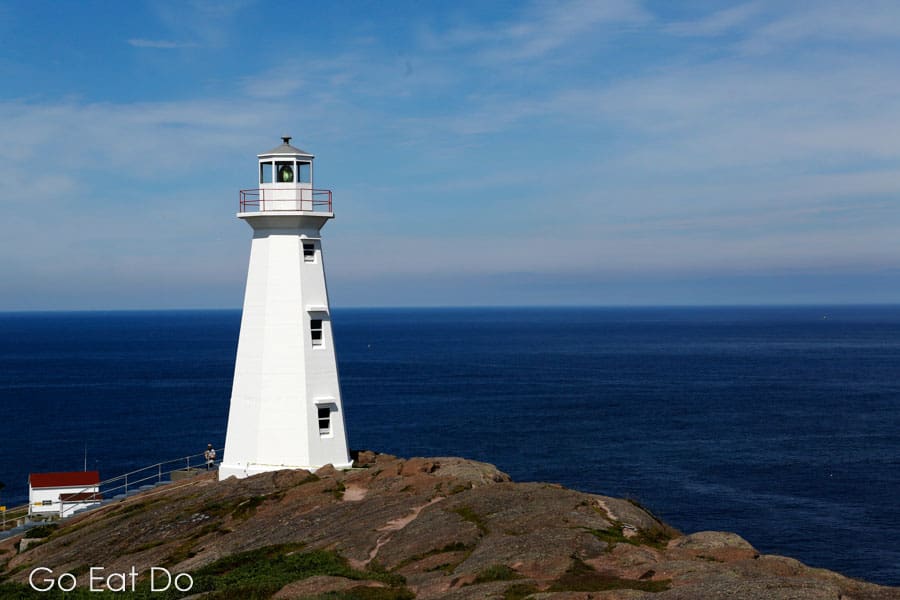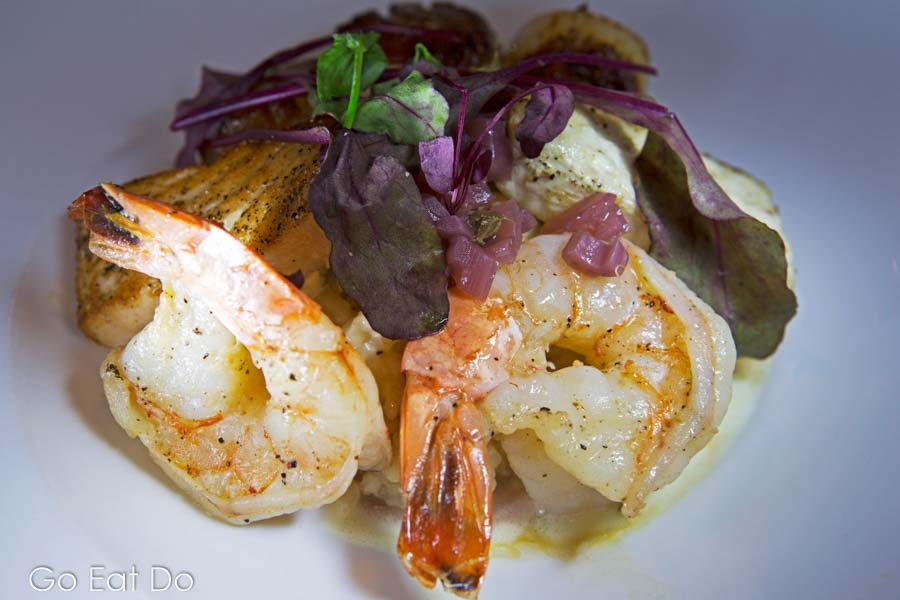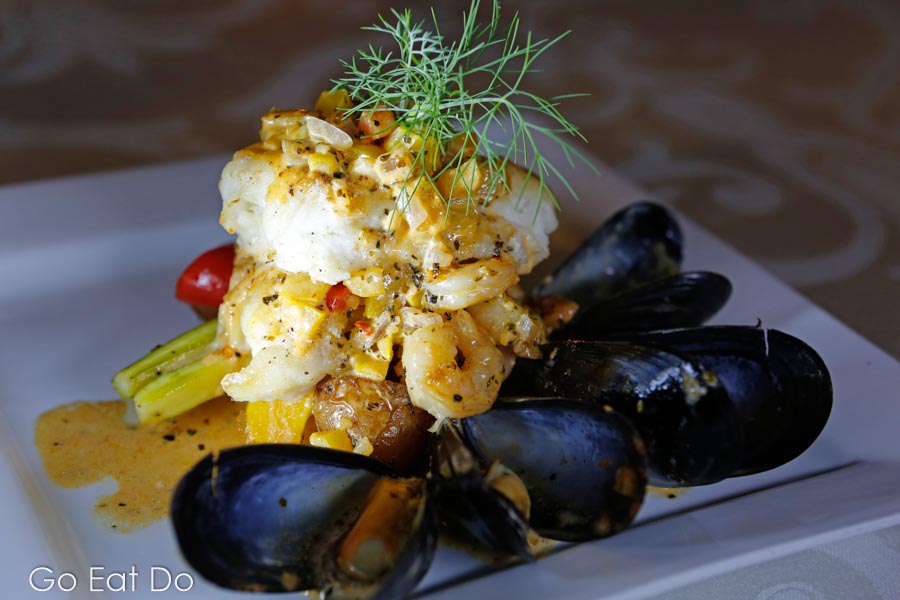Biting off more than he can chew? Stuart Forster looks at coastal cuisine in Atlantic Canada.
The coastal cuisine of Atlantic Canada showcases fish and shellfish harvested from the North Atlantic. Pull into almost any restaurant during a road trip through eastern Canada and it’s likely you’ll see cod, lobsters and other types of seafood listed among daily specials. Get chatting, something that’s not difficult to do on Canada’s east coast, and it’s likely you’ll find that restaurateurs take delight in talking about the provenance of the locally sourced produce that they serve.

Coastal cuisine in Atlantic Canada
It would be curious if Canadians did not take to the sea to source at least some of their food. After all, Canada has 202,080 kilometres of coastline. That’s well over three times the length of the country with the next longest shoreline, Norway, whose fjords and islands mean that 58,133 kilometres of the Nordic nation is lapped by water. The United Kingdom, by comparison, has ‘just’ 12,429 kilometres of coast.

Remarkably, parts of Canada’s eastern seaboard — including St John’s, the provincial capital of Newfoundland and Labrador — lie closer to Oslo, Norway’s capital, than to Victoria, the provincial capital of British Columbia on the western side of the country.

A history of fishing
Even during the Middle Ages sailing boats ventured forth from European ports to fish in waters that are today Canadian. Basques, Bretons and Bristolians sailed across the North Atlantic in wooden vessels that would be dwarfed by modern ocean-going trawlers and fished off the island of Newfoundland.
The crew of the explorer John Cabot, a Venetian citizen who led an expedition under letters patent from England’s King Henry VII, described the sea as being so full of fish that they could be taken not only with nets but with fishing baskets. That was back in 1497. Much changed in the five centuries that followed.

Over-fishing resulted in such an alarming depletion in stocks that the Canadian government saw no viable alternative to announcing a widely unpopular moratorium on cod fishing in July 1992. Inevitably that impacted jobs and communities in which fishing had long been central to the way of life. Today Newfoundlanders can head out on boats to fish recreationally and cod is served in many restaurants.

Cod is usually listed simply as fish, with other species named explicitly. Pan-fried cod tongues are a delicacy often served as an appetiser. At Mallard Cottage — which is located at Quidi Vidi village and regarded as one of Newfoundland and Labrador’s best restaurants — you might be able to taste fried cod cheeks with dukkah spice, typical of North Africa, and hummus.
Raymond’s is another highly regarded restaurant near the harbour of St John’s, which frequently sees icebergs floating by from April into June. It serves seared fillets of the fish that formerly attracted seasonal fleets from Europe.

Taking cod to Europe
The cod, once landed, was filleted, and placed in barrels of brine or salted and dried in the sun. Those techniques of curing cod ensured the fish could survive the journey back across the North Atlantic without refrigeration and then be sold in the markets of southern Europe. Known as bacalhau, salted cod is still a delicacy in Portugal.

The term, differently spelt, lends its name to the Baccalieu Trail, a scenic driving route that encompasses fishing communities around Conception Bay and on the Avalon Peninsula. It runs through settlements with romantic names such as Cupids — the oldest English colony in all of Canada, where archaeological excavations are ongoing — and Heart’s Content, the location of one of the telegraph stations that enabled communication times between North America and Europe to be cut from a minimum of 10 days to a matter of minutes when the SS Great Britain landed submarine transatlantic cables in 1866. The tradition of cod salting also inspires the name of Bacalao, a fine-dining restaurant in St John’s, where crispy fish fritters are served.

Chowing down on chowder
Seafood chowder is a regional delicacy that you’ll find across Atlantic Canada. Recipes vary from family to family and restaurant to restaurant, meaning it’s worth trying again and again. It’s common to see cups of creamy chowder served as an appetiser with the larger option of a bowl as a main course. Chopped lobster, clams, scallop and whatever happens to have been landed by local fishing boats may add flavour to the chowder.
Once an inexpensive, filling dish that could be thickened by hardtack, a type of savoury biscuit that proved easy to store on sailing ships and in remote fishing communities, chowder is now a common sight on the menus of fine-dining establishments, including the likes of the Five Fishermen in Halifax, Nova Scotia — a restaurant in a heritage building that, perhaps a touch chillingly, has a reputation for being the most haunted place in the city.
The cold, plankton-rich water of the North Atlantic is ideal habitat for the lobsters that were once regarded as a cheap source of protein by Nova Scotians. The lobster fishing season runs from November through to May. At Hall’s Harbour Lobster Pound — which looks onto the Bay of Fundy, the body of water that experiences the world’s highest tides — you can take a guided tour and step inside the facility in which thousands of lobsters as stored for consumption throughout the remainder of the year and learn about the challenges posed by lobster fishing and the animal’s life cycle.

Diners have the option of selecting a lobster and then pulling on a bib before it’s served with creamy ‘slaw and fries. Lobster-laced variations of mac and cheese plus poutine — a signature Canadian comfort food that traditionally involves smothering fries with gravy and cheese curds — are options if you don’t fancy cracking open claws to eke out the meat. Looking for something lighter? Try a lobster-packed brioche roll.

Dining in New Brunswick
If tearing apart a lobster doesn’t appeal, look out for opportunities to order naked lobster. As the name of the dish intimates, the meat is ‘undressed’ from the shellfish’s protective exoskeleton. Done well, as by Chef Chris Aerni at the upscale Rossmount Inn Restaurant near St Andrews by-the-Sea in New Brunswick, the meat of the claw retains its original form when extracted from the shell.

Back across the far side of the Bay of Fundy, in Nova Scotia, which also happens to be one of the world’s premier locations for whale watching, the town of Digby has become known for the quality of its scallops. Over three days each August, the town sees an influx of visitors to the Digby Scallop Days, a festival that champions the local fishing fleet and its principal harvest. The scallops are shucked and served in a multitude of ways, including barbecued. Don’t be surprised if you see Digby Scallops on menus across Atlantic Canada.

Some people regard oysters as an aphrodisiac though true foodies are more inclined to see them as an ideal appetiser to share while conversing. Malpeque oysters, from Prince Edward Island, and Caraquet oysters, from northern New Brunswick, are two types to try while in this part of Canada. Local conditions, likened to the terroir of vineyards and known as the merroir, help provide the oysters with their character and flavour.
How about a dozen, served with a piquant mignonette sauce, as the prelude to a meal featuring a lobster or a fillet of cod? Collectively, they represent a mouth-watering cross-section of delicacies from Atlantic Canada.

Further information
Find out more about culinary highlights and things to do and see on the Destination Canada website.
Stuart Forster, the author of this article, is a freelance food and travel writer. He was awarded the 2017 BACTA (British Annual Canada Travel Award) for Best Online Content. If you’d like to sponsor a post on Go Eat Do, please get in touch by calling 07947 587136 or sending a message via the contact page.
Photos illustrating this post are by Why Eye Photography, based in North East England.

If you enjoyed this post on coastal cuisine in Atlantic Canada, ‘like’ the Go Eat Do Facebook page to see more photos and content.




Gemma Jamieson
May 27, 2019 at 17:12There is so much I want to try, I’ve never had chowder or lobster before.
Stuart Forster
May 31, 2019 at 12:57I can highly recommend both. A bowl of good chowder is a meal in itself: delicious and filling.
Dea Mariano
June 3, 2019 at 07:46Looks appetizing! It appears that you really had a great experience. Keep it up! 🙂
Stuart Forster
June 3, 2019 at 08:06Thanks, Dea. Picking a favourite meal from among the plates shown would be tough!